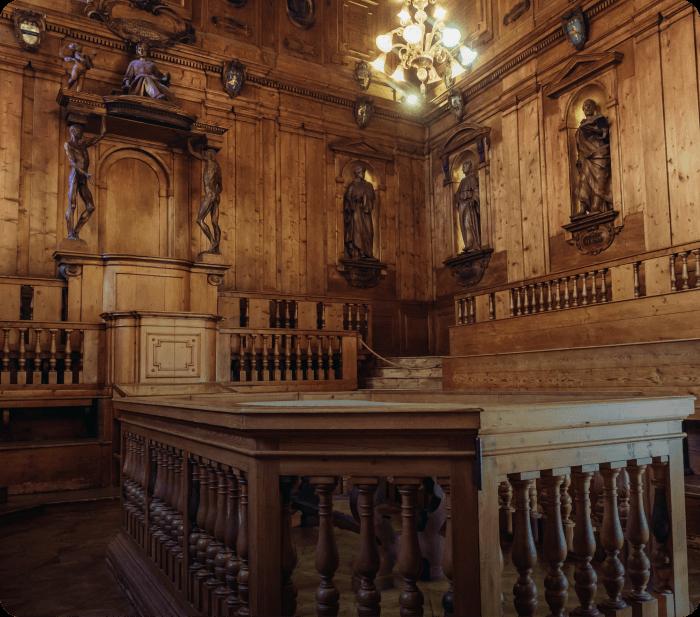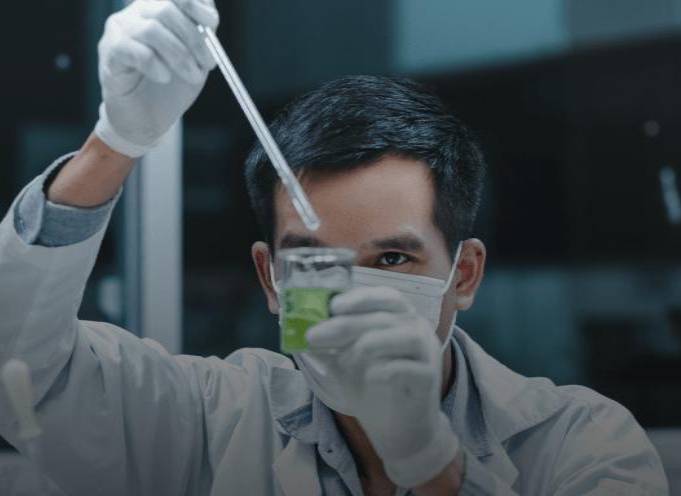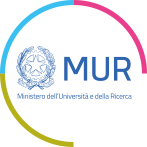Italian higher education system
To get a close look at the world of higher education in Italy, you first need to know that there are several paths.
In addition to University studies, generally divided into three cycles, the Italian system includes: the Higher Education for Fine Arts, Music and Dance (visit the AFAM section); Higher Schools for Language Mediators (visit the SSML section), which release a legally recognized qualification equivalent to university degrees, and Higher Technical Institutes that represent the non-university tertiary education segment and which respond to the innovative needs of market and business (visit the ITS section).
University
In Italy, you can find 4 types of universities:- State-run public universities;
- Legally recognized non-state, private universities, which release qualifications that have the same value as those obtained from state universities;
- Legally recognized non-state distance learning universities, which award qualifications that have the same value as those obtained from state universities, and deliver courses through e-learning, while exams and thesis defences take place in person;
- Specialized superior graduate schools or institutes, specialized institutions in research activities, mainly offer high-level integrative teaching to university courses and/or third-cycle courses or postgraduate education.
Before moving forward, you need to know what CFUs (Crediti Formativi Universitari) are, as they represent the unit of measurement and evaluation of the workload required for every single course you choose.
CFUs, or University Credits, are the Italian equivalent of ECTS (European Credit Transfer and Accumulation System), which are European University Credits: 1 CFU corresponds to 1 ECTS.
CFUs measure the workload required of students, divided into lessons, exercises, laboratories, internships, and other recognized activities. One credit corresponds to 25 hours of overall effort; conventionally, 60 credits are obtained in one year. Knowledge and certified professional skills (such as those of a foreign language) can also be recognized as credits.

The Italian university system is structured into three cycles:
- the first cycle is the Laurea, a Bachelor's Degree course, which can be accessed with a high school diploma or a comparable foreign qualification. In this case, the courses last for three years, and to obtain the Bachelor's degree - and therefore the academic qualification of "Doctor" - you need to collect 180 CFUs (ECTS). Each exam taken in Italy, as well as in other European countries, corresponds to a number of CFUs (which can vary depending on the exam). Once you have earned the necessary credits and having completed all the curricular activities (such as exams, labs, curricular internships...), you will have to defend your dissertation. Only then, you can choose whether to move on to the next cycle or enter the workforce.
- With a high school diploma or a comparable foreign degree, you can also access the Single-Cycle Master's Degree programs, Laurea Magistrale a ciclo unico (i.e. programs where the first and second cycle are integrated). This kind of program has a duration of 5 years - 300 CFU (as in the case of veterinary medicine, pharmacy, architecture, law, primary education sciences, conservation and restoration) or 6 years - 360 CFU (as in the case of medicine and dentistry). To get the degree, it is necessary to obtain the required CFUs (300 or 360) and to write and present a Single-Cycle Master's dissertation.
- The second cycle is the Laurea Magistrale, which correspond to a Master’s Degree, Access to Laurea Magistrale courses requires a 1st cycle degree or a comparable foreign degree. By attending this succession of studies, you can obtain a more specific and in-depth training, and therefore a higher qualification in the chosen subject. To achieve the title of "Dottore Magistrale," you will need to acquire 120 CFUs, obtained by passing all curricular exams and by presenting and defending a Laurea Magistrale dissertation.
The Laurea Magistrale and the Laurea Magistrale a ciclo unico, provide access to the third cycle courses. The 3rd level of education includes Specializing Masters and Postgraduate Degree (PhD),
- The PhD (Dottorato di ricerca), Through these courses, that represent the highest level of university education, you can acquire the correct method for working in advanced scientific research. To be admitted to a PhD, you need a Laurea Magistrale or Laurea Magistrale a ciclo unico (or a comparable foreign degree) and to pass an admission examination. The third cycle lasts at least 3 years, and the majority of these programs provide a monthly scholarship. At the end of this cycle of study, you will be required to develop an original research thesis and discuss it during the final exam in order to obtain the title of "Dottore di ricerca”.
- The Specializing Master, Its aim is to provide knowledge and skills and qualify people to perform highly qualified professional activities in the healthcare and veterinary fields, in the area of cultural heritage, and in the legal professions. To be admitted you need to have a Laurea Magistrale or Laurea Magistrale a ciclo unico (or a comparable foreign degree) and the pass an exam. The duration of specialization courses varies, depending on the disciplinary sector, from a minimum of two years to a maximum of six years; the production of a final thesis is also expected.
The system of Higher Education for Fine Arts, Music and Dance (AFAM – acronym of Alta Formazione Artistica e Musicale).
In Italy, a wide range of institutions (a total of 144!) are part of the system of Higher Education for Fine Arts, Music and Dance, shortly AFAM.
They are mostly state-run institutions, with only one regional institute (Conservatoire de la Vallée d'Aoste), but there are also legally recognized private institutes.
The AFAM institutions offer higher education courses that, at the end of the study cycle, release academic diplomas, three-year and two-year titles (1st and 2nd level) equivalent to degrees, which allow students to continue their studies, access public competitions, and enter the world of work and professions.
Unlike universities, AFAM institutes do not have CFUs but CFAs, that are, Academic Training Credits. Soon, even AFAM institutes will have the possibility to provide the 3rd cycle, namely the PHD.
Let’s have a closer look at this field!
The AFAM system is divided as following:
- Academies of Fine Arts (both State and legally recognized);
- Higher Schools of Design (ISIA);
- Higher Schools of Design (ISIA);
- State Music Conservatories;
- Consevatoire de la Vallée d'Aoste;
- National Dance Academy;
- National Academy of Dramatic Art;
- Institutions authorized to issue legally recognized degrees under Article 11 of P. Decree n. 212/2005.

Academies of Fine Arts, le Accademie di Belle Arti, offer courses in visual arts (painting, sculpture, decoration, and graphics), design and applied arts (set design, graphic design, fashion design, photography, restoration, and new art technologies), as well as communication and art teaching. All courses include a first and a second level, like universities (link), except for restoration courses, which are a single-cycle programs (five years) and courses that qualify for teaching (which are exclusively second level).
The Higher Schools of Design, Istituti Superiori per le Industrie Artistiche (ISIA), were the first institutions to deal with training in the design sector in general, for products, communication, graphics, and publishing, and they train professionals specialized in the research and design of objects and services with a theoretical practical, broad, and multidisciplinary vision. The teaching staff of the ISIA is mostly composed of professionals in their respective fields, and the training model follows the tradition of the great European design schools, from Bauhaus to the Ulm School, both renowned schools of graphic design and industrial design that made history. The academic diplomas issued by ISIA are equivalent to L4 degrees for the three-year period and LM12 for the two-year period.
State Conservatories of Music and legally recognized private Music Institutes offer courses in singing, instrument performance, musical composition, orchestra conducting, choir conducting, musical informatics, sound technicians, and music teacher training. The repertoire varies from classical music to jazz, contemporary music, pop, and ethnic music. An admission exam is required for all courses. In every conservatory, students participate in ensemble activities in various formations of different sizes: from duos to chamber ensembles, orchestra and choir. Production activities are a consequence of the didactic and research actions that are carried out during the programs. Ordinary courses in Music Therapy started as well, which have progressively increased from the year 2022-2023.
There is only one National Dance Academy in Italy located in Rome and it is divided into four schools: classical dance, contemporary dance, choreography and dance teaching. Passing an admission test is required to access.
There is also only one National Academy of Dramatic Art in Italy that trains actors and directors and awards university-level qualifications.
Follow your passions! Look for the best course for you, it all starts here!
Higher Schools for Language Mediators, Scuole superiori per mediatori linguistici (S.S.M.L.).
In Italy, you can study languages more deeply at the Higher Schools for Language Mediators, Scuole superiori per mediatori linguistici (S.S.M.L.).
Attending these schools, you will obtain a degree equivalent to the university degrees awarded upon completion of university courses in Language Mediation Sciences. The courses are three years long (so the attainment of 180 CFUs is required).
Students who choose this path will receive specific written and oral linguistic and technical skills in at least two foreign languages - in addition to Italian - suitable for professionals working in the field of language mediation.
Access to Schools for Language Mediators takes place after obtaining a high school diploma and being in possession of an adequate basic language preparation.
Some of these specific schools can also activate second-cycle courses lasting two years (like a Master's Degree obtained at universities) in order to acquire a greater competence and increase specificity in this sector.
By clicking here, you can find the list of SSMLs that activate I and II cycle courses.

Higher Technical Institutes, Istituti Tecnici Superiori (I.T.S.)
Higher Technical Institutes, Istituti Tecnici Superiori (I.T.S.) represent an opportunity offered by the Italian education system with the aim of training experts who can quickly access the job market with a particular focus on small and medium-sized enterprises.
Access to Istituti Tecnici Superiori is based on a selection, after being also in the possession of a high school diploma or a four-year diploma in vocational and training education, associated with a one-year IFTS integrative course (i.e., a certified apprenticeship year).
At the end of the course, a Diploma Tecnico Superiore is issued, along with a certification of the competences corresponding to level V of the European Qualifications Framework (EQF).
Have a look here and search for the I.T.S. that best suits you.
Copyright © Universitaly 2023. All Rights Reserved

